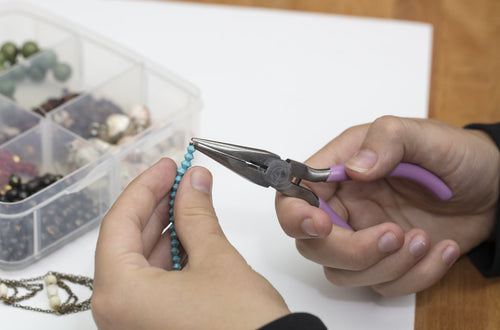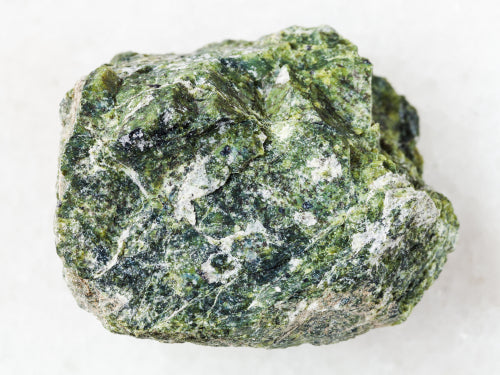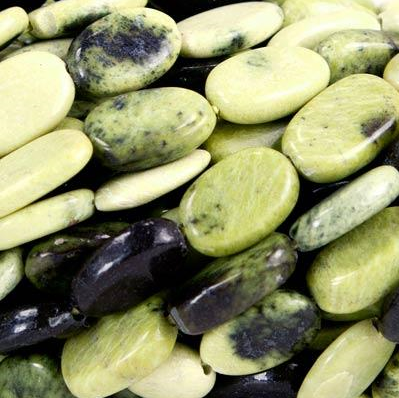The beautiful, diverse and ancient opal gemstone makes gorgeous jewelry that is perfect for all types of occasions. Ranked second only to the emerald by the Romans, it was included among the noble gems and was considered lucky.
About Opals
Opals are the birthstone for October. The opal gets its name from the Greek word “opallios,” meaning alter, due to its changing colors.
Opals are amorphous, so they do not have a defined structure but come in a variety of colors, shapes and sizes.
This gemstone is found on just about every continent. The term “opalescence” refers to the milky-white or pearly luster that the majority of opals exhibit.
Rare opals display flashes of color when rotated. The flashes are known as the play of color.
Formation
Geologists believe this gemstone takes close to five million years to form. It is made from silica, which was very common in prehistoric Australia, for example, between 20 and 30 million years ago. Opal forms when the silica solidifies between crevices and rocks.
While scientists are still unsure of the precise mechanism by which opals form, some believe that the process begins when silica washes down into the rock crevices during heavy rains. They theorize that after the water evaporates, the silica gel that remains solidifies over millions of years until the opal forms. Opals have a water content of between 5 and 20 percent, so their composition seems to support this hypothesis.

The color of precious opals is the result of impurities in the silica. Different minerals or chemicals in the silica create the range of colors opals often display.
The opalescent property of these gemstones results from the way the silica crystals are distributed in the material. Individual silica molecules are spherical. When they fuse, small spaces form between the spheres. These spaces allow light to diffract, causing different shapes and colors to emerge.
Australia has dominated opal production since the late 19th century, accounting for more than 90 percent of the total world output.
Opal Crazing
Some opals are affected by crazing, a condition that causes the gemstones to form internal cracks. Crazing is inconsistent and can be unpredictable, sometimes occurring at random. It usually happens when the gemstone is removed from damp conditions and dries very quickly or when it is suddenly exposed to bright light.
Crazing can also happen when the opal experiences excessive vibration, such as during cutting and polishing. Crazing also seems to be related to the place of origin of the opal, as opals from some mines are more prone to crazing than opals from other areas.
To prevent crazing, jewelers should observe a long drying process before working on the stone. Good drying methods can take anywhere from a few months to several years to achieve results that can keep the gemstone suitably stable for use in jewelry.
History of the Opal

The first opal dates to 4000 B.C. Louis Leaky, a renowned anthropologist, found opals in a cave in Kenya during an excavation.
The rich and powerful of ancient Rome were the first to see the value of opals. The ancient Romans loved the colorful gemstone. One of the historical figures who is said to have been fond of the gemstone is Mark Antony, Cleopatra’s lover. Legend has it he offered one-third of his land for an opal to gift to the Egyptian queen.
In the late 18th and early 19th century, the opal was branded as bad luck and associated with death. Queen Victoria opposed this superstition, and she gifted her five daughters with the opal, making it fashionable in Royal circles.
Good Luck or Bad Luck?
One look at the patterned interior of a spectacular opal can reveal why it has been at the heart of countless myths throughout history. Legends of its mystical power, stories about it in literature and competition for possession of this gemstone still exist today.
The ancient Romans thought it was a symbol of hope, similar to the rainbow. Pliny, the ancient Roman author, stated opals were the most beautiful of all stones because of their array of colors.
Ancient Greeks thought the milky stone would give the bearer the ability to prophesize, while ancient Arabians believed opals rained down from heaven.
During the Middle Ages, the opal was highly valued and often placed with lucky talismans. It was believed if you wrapped an opal in a bay leaf, you’d gain the powers of invisibility, and many thought it improved eyesight. Blonde women wore the gem to keep their hair color from fading.
The opal became associated with bad luck during the era of the Black Plague. A rumor spread that someone who died from the Black Plague was wearing an opal that turned a dull color once they passed.
The stone continued to be associated with death when the Spanish King Alfonso XII gave one to his wife, Mercedes, who died shortly after. The King then gave it to his grandmother, his sister and his sister-in-law — all of whom also died. Then he wore the opal ring himself and died. Despite the unfortunate coincidence, the royal family died from cholera, not a cursed opal.
Sir Walter Scott wrote the novel “Anne of Geierstein” in 1829, which adversely influenced the market for opals. The main character, Lady Hermione, wears an opal in her hair that changes color with her moods. When holy water touches the opal, it becomes discolored, so she is thought to be a demon and dies.
Opals returned to favor 20 years later because of the discovery of black opals, which Queen Victoria favored and were considered lucky.
Diamond traders started spreading the rumor that it is bad luck to wear this gemstone if it is not your birthstone. These traders did not want to lose business when opals became popular during the 19th and 20th centuries, so they spread the rumor to dissuade people from buying them.
Today, however, with better technology and a deeper understanding of the facts, many people see beyond the idea of bad luck and good luck to what opals really are: beautiful gemstones with a unique opalescence that other gems cannot match. This renewed interest in opals is making it one of the most popular gemstones on the market.
Trends in Opal Jewelry
Opal jewelry is having a major moment in the jewelry world. The Louis Vuitton: Acte V collection featured a captivating opal stone, and designer Wing Yau’s work is synonymous with the gemstone. Opals are typically set in constellation-like earrings, rings and necklaces, but the latest trend has been toward delicate, intricate and sophisticated pieces like those worn by Emma Watson and Cate Blanchett.
Vintage Wedding/Engagement Rings
Opal wedding and engagement rings are popular, especially with the millennial generation. It is currently one of the top-performing engagement ring trends, especially when set in rose gold.
The gemstone’s unique beauty makes it an ideal choice for the unconventional bride. It captivates the eye with flashes of color that make the iridescent stone mesmerizing.
This October birthstone has a magical glow and has been steeped in mystery since the Middle Ages. Opals are said to symbolize fidelity, and they are a truly one-of-a-kind ring since they are non-replicable.
They are softer than most gemstones with a Mohs rating of 5.5- 6.0, so care must be taken when wearing and caring for your ring.
Statement Jewelry
Giorgio Armani, Stella McCartney and several other big-name designers made earrings the essential jewelry accessory of their fall and winter collections.

Opals are part of the collection that has given way to striking pieces that work as a strong and extravagant look. They still look delicate when intricately added to drop earrings or swinging hoops.
Mismatched earrings are still on trend, as are solo earrings. Geometric designs and glittering gemstones were all the rage at the shows by major fashion houses. If you are a fan of this mystical stone, looking fashionable choices and making a statement isn’t difficult.
Body Jewelry
Celebrities and Instagrammers are obsessed with opal body jewelry. Sporting the opaque gemstone with a kaleidoscope of colors embedded into it is like wearing a rainbow.
The mysterious opal also allows body jewelry designers a way to add natural elements to their collection.
Types of Opals
Regardless of the type, opals have been considered talismans of good luck for centuries and are linked with connotations of magical properties. They can be categorized by three main types based on their color and varieties. The types are common, fire and precious opals.
Common opals are typically found in vintage jewelry and are lighter or white in color. They do not exhibit a play of color. Common opals are found in many locations around the world.
Fire opals can be found in Mexico and Ethiopia and are a vivid reddish-brown to deep orange. They may or may not exhibit the play of color.
Precious opals are dark and black and are mostly found in Australia, though they are also mined in Canada, Honduras, Poland, Peru, Guatemala, Ethiopia, Zambia, Indonesia and Mexico. The precious opal flashes iridescent colors when it is viewed from different angles.
Some of the most sought-after opals are:
Black or Dark Opal
Black opals are mined in New South Wales, Australia. They are characterized by a black body tone that causes a bright quality of color the lighter shades simply cannot match. They are thought to bring good luck.

Pink
Pink opals are relatively rare, found only in the Andes mountains of Peru or in western Australia.
Pink opals are associated with thoughtfulness and enhancing love. It is considered to be the “stone of hope,” and many think it helps people fulfill or enhance their potential.
This opal is said to have healing properties and can help promote a feeling of calmness. Since the stone retains some water inside it, this opal has water energy, which can help balance your aura. Pink opals are also thought to help relieve stress and keep nightmares away.
Other names for pink opals include angel’s stone and queen’s stone because it is valued as both stunning and feminine.

Dendritic Opal
Dendritic is used to describe the beautiful tree-like inclusions found in some opals. The marks appear due to the presence of silicates or manganese oxides. This type of opal is mined in New Mexico.
Associated with hope and life, the dendritic opal is said to change your luck for the better.
If you want to sense the energy near you and try to understand people better, dendritic opals can help by enhancing your mental power.
Dendritic opal beads come in all shapes and sizes and are widely available and affordable.
Blue
The blue opal is mined in Peru. Although it is a common opal and does not have a play of color, it is still very desirable. It is associated with spiritual healing and helps the one who wears it feel peaceful, making it an excellent choice for those experiencing a lot of stress.
Communication is easier when wearing a blue opal. Insight is another property of this gemstone, as understanding what is going on with the people around you can help enable better communication.
Some believe that this opal raises one’s self-confidence. The gemstone is believed to give the wearer courage to do what needs to be done and not worry about the future.
Making Opal Jewelry
Opal jewelry is making a resurgence in popularity. Design your own family keepsake or create a one-of-a-kind piece as a gift. A homemade opal pendant is the perfect craft to start with whether you are a novice or have been making jewelry for years.
The opal is a beautiful stone for jewelry, but since it is softer than most other gemstones, it is best suited for pieces that rarely encounter impacts. When used in a ring, the best designs have a bezel to protect the stone.
Double-Stretch Opal Bracelet

This striking double-stretch bracelet can be made using your favorite opal. Elastic bracelets are versatile and easy to wear. Choose a good quality elastic cord that is complementary to the opal beads you are using. Although a common option, clear elastic is more noticeable with dark colored beads.
Vintage Haskell-Style Beaded Pendant
Another pendant but a different look! Miriam Haskell’s elaborate beaded jewelry designs come to life in this exquisite vintage pendant. Opals are the ideal gemstone for this iconic look that uses the Fireline caging technique.
Beaded Bobby Pins
Invented in 1899 in Paris by Luis Marcus, bobby pins are our favorite accessory. Their name was coined after the Bob hairstyle because they were used to keep bobbed hair in place. Embellish them with opals for a whimsical, retro look. They are perfect for adding some glam to your everyday ensemble.
A Beautiful Stone Throughout the Ages
A single opal can flash every color of the spectrum with hypnotic intensity. The opal is one of the most popular gemstones on the market and can command prices that rival diamonds, emeralds and rubies.

















































